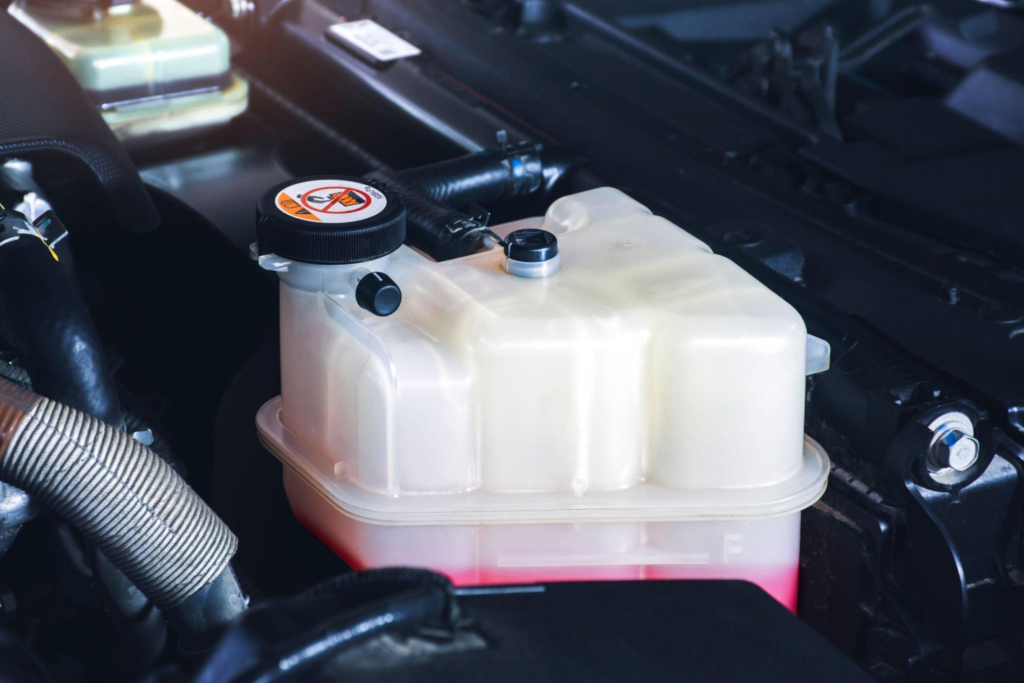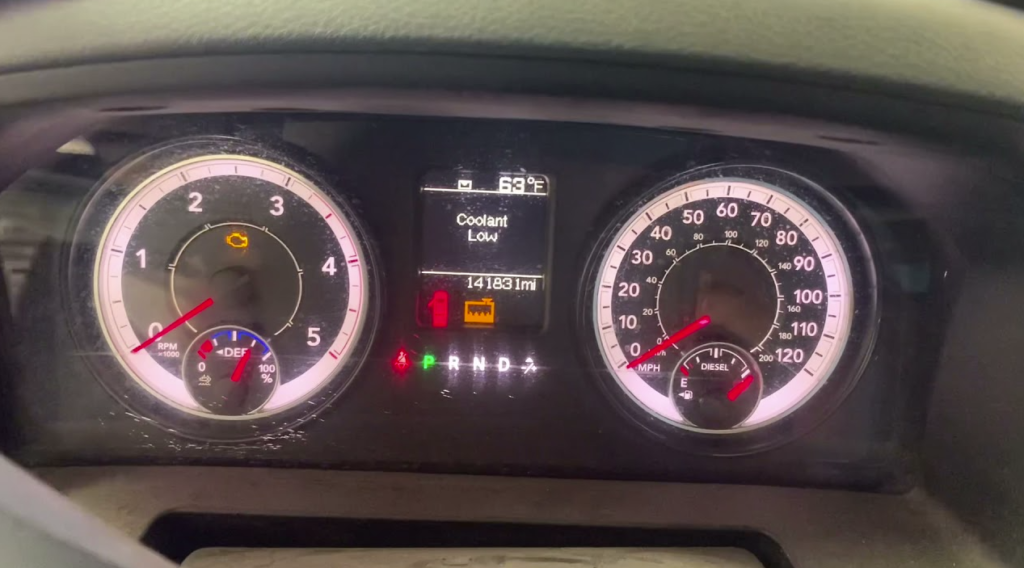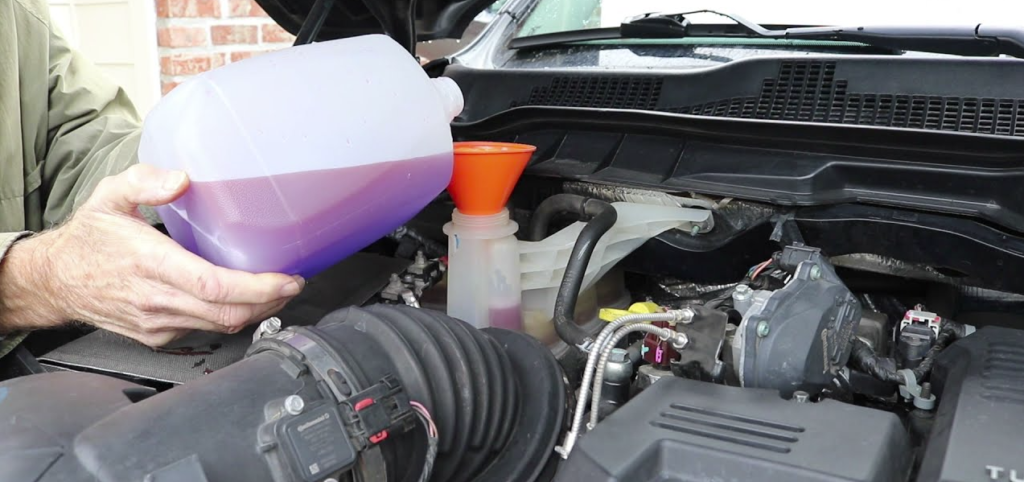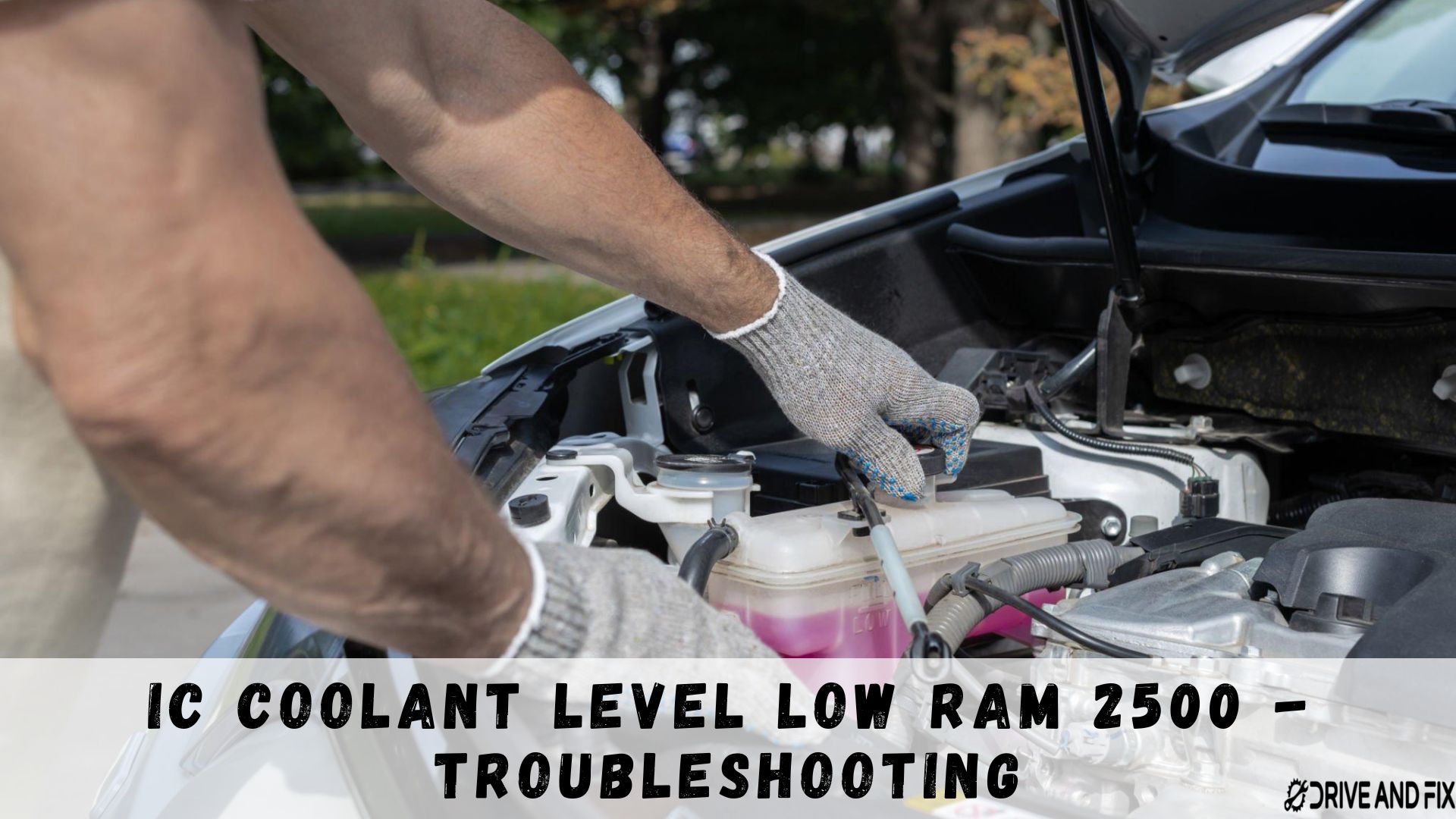Maintaining proper coolant levels is crucial for the optimal performance of a vehicle’s engine. Coolant helps in the regulation of engine temperature and prevents it from overheating. Deficient coolant levels cause the engine to overheat, leading to severe damage and expensive repairs.
We will provide step-by-step instructions on when the ic coolant level low ram 2500 to ensure your engine runs smoothly and avoid potential damage.
Causes Of IC Coolant Low Ram 2500

There are several potential causes of low coolant levels in a RAM 2500. Some of the most common causes include:
- Leaks: The most common cause of low coolant levels is a leak in the cooling system. A damaged hose, a cracked radiator, a damaged water pump, or a damaged head gasket could cause this. Leaks can cause coolant to slowly drain from the system, leading to low coolant levels over time.
- Overheating: Overheating the engine can cause the coolant to evaporate more quickly, leading to low coolant levels. That can be caused by a malfunctioning cooling system or driving in hot weather conditions.
- Evaporation: Over time, coolant can evaporate from the cooling system, especially if the system is not sealed correctly. This can lead to a gradual decrease in coolant levels.
- Incorrect coolant mixture: This can lead to low coolant levels. It’s advisable always to use the recommended coolant type and mix it with water as needed.
If you find out that your coolant level is consistently low, seek the advice of a qualified mechanic to determine the underlying cause of the issue. Ignoring low coolant levels can cause damage to your engine and may lead to expensive repairs down the line.
How To Check IC Coolant Level

To check the coolant level in your RAM 2500:
- Turn off the engine and allow it to cool down completely.
- Open your vehicle’s hood and locate the coolant reservoir in the engine compartment. The coolant reservoir is typically a translucent plastic container with a cap with a coolant symbol. Refer to your vehicle owner’s manual if you have difficulty locating the pool.
- Upon locating the reservoir, check the level of the coolant by looking at the markings on the side of the container. These markings indicate the minimum and maximum levels of the coolant in the reservoir.
- If the coolant level falls below the minimum mark, it is low, and you need to add more coolant to the system. If the coolant level falls between the minimum and maximum marks, the level is okay, and you don’t need to add more coolant now.
Removing the excess coolant is essential to prevent potential issues if the coolant level is above the maximum mark. Consult a qualified mechanic to determine the appropriate steps for removing the excess coolant.
You should never remove the radiator cap while the engine is hot, as this can lead to serious injury from hot steam or coolant. Always wait until the engine has thoroughly cooled down before checking or adding coolant.
How To Add IC Coolant

Use the correct coolant recommended by the vehicle manufacturer for your RAM 2500, as different coolants have different properties, and mixing incompatible coolants can cause damage to your engine. Additionally, you may need to integrate the coolant with water to achieve the correct concentration. Here’s how to add coolant to your RAM 2500:
- Let the engine cool down completely.
- Open your vehicle’s hood and locate the coolant reservoir in the engine compartment.
- Check the coolant level to establish if you need more coolant for the system.
- Unscrew the reservoir cap and put the coolant into the reservoir till the maximum mark. Make sure to use a funnel to prevent spillage.
- If the coolant level is significantly low, adding a 50/50 mixture of coolant and distilled water may be necessary. Refer to your vehicle owner’s manual to determine the correct coolant-to-water ratio for your vehicle.
- Once you’ve added the coolant, replace the cap on the coolant reservoir and tighten it securely.
- Start the engine and leave it to run for a few minutes. This permits the coolant to circulate through the system and reach all engine parts.
- Recheck the coolant level to ensure that it’s within the recommended range.
Things To Remember
Remember to dispose of any unused coolant safely and per local regulations.
If you do not know which coolant to use or how to mix it with water, consult your vehicle owner’s manual or seek the advice of a qualified mechanic.
After adding coolant to your RAM 2500, recheck the coolant level to ensure it’s within the recommended range. This is because adding coolant to the reservoir may displace air pockets in the cooling system, which can affect the accuracy of the initial reading. Rechecking the coolant level will give you a more accurate reading of the system’s coolant level.
If the coolant level exceeds the maximum mark, consult a qualified mechanic to determine the appropriate steps for removing the excess coolant.
Remember to check your coolant level regularly, especially before long trips or during hot weather conditions. This will help prevent engine damage due to low coolant levels. If you find that the coolant level is consistently low, it may indicate a leak in the cooling system, and you should seek the advice of a qualified mechanic.
How Often To Replace IC Coolant

The frequency of replacing engine coolant (also known as antifreeze or radiator fluid) in a RAM 2500 can vary depending on the make and model and the type of coolant used. As a general guideline, most manufacturers recommend replacing the engine coolant every 2 to 5 years or every 30,000 to 100,000 miles, whichever comes first.
However, driving conditions can also affect how often you replace your engine coolant. For example, if you frequently drive in hot weather conditions or do a lot of towing or hauling, your coolant may need to be replaced more often.
Always check the manual or speak with a qualified mechanic to determine the recommended coolant replacement interval for your specific RAM 2500 model. Any signs of coolant contamination, such as discoloration or debris, means you should replace the coolant sooner to prevent engine damage.
Dangers Of Low IC Coolant Levels
- Overheating: Coolant is responsible for absorbing and dissipating heat generated by the engine. When coolant levels are low, the engine can overheat and cause severe damage to the engine components.
- Engine damage: Overheating due to low coolant levels can cause damage to various engine components, such as the head gasket, pistons, and cylinder walls. This damage can result in costly repairs or even require an engine replacement.
- Reduced performance: Low coolant levels can cause reduced performance and fuel efficiency. This can result in sluggish acceleration, diminished power, and increased fuel consumption.
- Safety risks: Low coolant levels can also pose safety risks, as an overheated engine can cause the vehicle to stall or break down unexpectedly, potentially leading to an accident.
When To Seek Professional Help
If you notice that your coolant level continues to drop or experience other issues with your cooling system, it’s best to have it inspected by a qualified mechanic. Continuing to drive with low coolant levels or a malfunctioning cooling system can cause engine damage and may lead to expensive repairs down the line.
If you’re experiencing overheating or other signs of a cooling system issue, address the problem promptly to prevent further damage. Attempting to fix a cooling system issue yourself can be dangerous and may cause further damage to your engine. Therefore, it’s best to seek the advice of a qualified mechanic who can properly diagnose and repair the issue. Avoid removing the radiator cap while the engine is hot, as this can cause serious injury from hot steam or coolant. Wait until the engine cools to check, add coolant or attempt any maintenance on the cooling system.
Verdict
Ic Coolant level low Ram 2500? Maintaining proper coolant levels in your RAM 2500 ensures your engine’s longevity and optimal performance. Regularly checking your coolant level and adding coolant as needed can prevent severe engine damage and costly repairs. Always use the recommended coolant type, mix it with water as needed, and seek a qualified mechanic’s advice if you experience any issues with your cooling system.
Our Popular Post:
Is Xzilon Worth It? Explained By Experts
Is It Ok To Drive With A Blocked DPF – Protect Your Engine And The Environment With This
What If I Accidentally Put Premium Gas Into My Car?
What to Do When Your Battery Light Stays On After Key Pulled?


